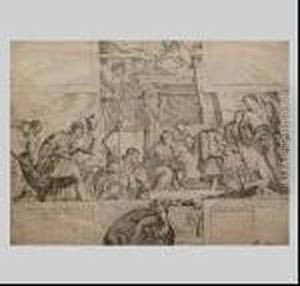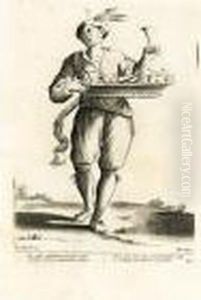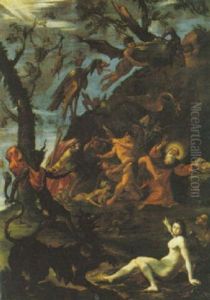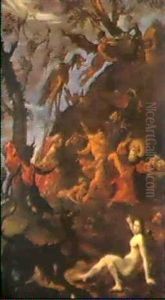Giuseppe Maria Mitelli Paintings
Giuseppe Maria Mitelli was an Italian artist born in 1634 in Bologna, Italy, into a family with a strong artistic background. His father, Agostino Mitelli, was a renowned painter of frescoes, specializing in quadratura, which undoubtedly influenced Giuseppe's early exposure and inclination towards the arts. Despite the shadow of his father's accomplishments, Giuseppe carved out his own niche, becoming best known for his work as an engraver and printmaker, though he was also skilled in painting.
Mitelli’s artistic journey was marked by a prolific output of etchings and engravings, which often depicted allegorical, satirical, and sometimes moralistic themes. His work was characterized by a keen observation of social and human character, infused with a sense of humor and a flair for the caricatural, which made his prints highly popular and sought after during his lifetime. He had a particular talent for capturing the essence of everyday life, as well as the follies and vices of society, through his detailed and imaginative compositions.
In addition to his individual prints, Mitelli produced several series of engravings that further established his reputation. These series often explored thematic concepts, such as the absurdities of human behavior or allegorical representations of the times. His ability to blend narrative with decorative elements showcased not only his artistic skill but also his intellectual engagement with contemporary cultural and social discussions.
Despite his success as an engraver, Mitelli did not limit himself to this medium. He was also involved in painting, though his painted works have not received as much historical attention as his prints. His style in painting, much like his engravings, reflected the baroque sensibilities of the time, with an emphasis on dynamic compositions and the interplay of light and shadow.
Giuseppe Maria Mitelli spent the majority of his career in Bologna, where he contributed significantly to the local artistic landscape. His work remained influential after his death in 1718, appreciated not only for its artistic merit but also for its insightful commentary on human nature and society. Mitelli’s legacy is preserved in several collections and museums, where his prints continue to be studied and admired for their creativity, wit, and technical skill.





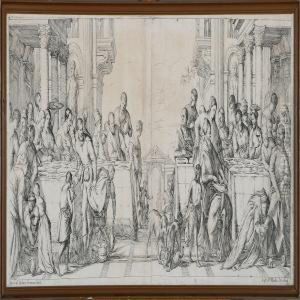



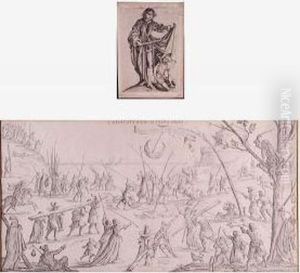



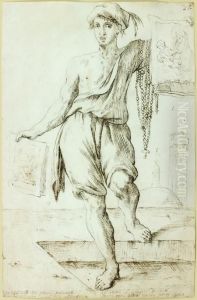
![L'arti Per Vi[a] Disegnate, E
Intagliate Ed Offerte Al Grande E Alto Nettunno Gigante, Sig. Della
Piazza Di Bologna](https://www.niceartgallery.com/imgs/1486944/s/giuseppe-maria-mitelli-larti-per-via-disegnate-e-intagliate-ed-offerte-al-grande-e-alto-nettunno-gigante-sig-della-piazza-di-bologna-b9da39fe.jpg)
